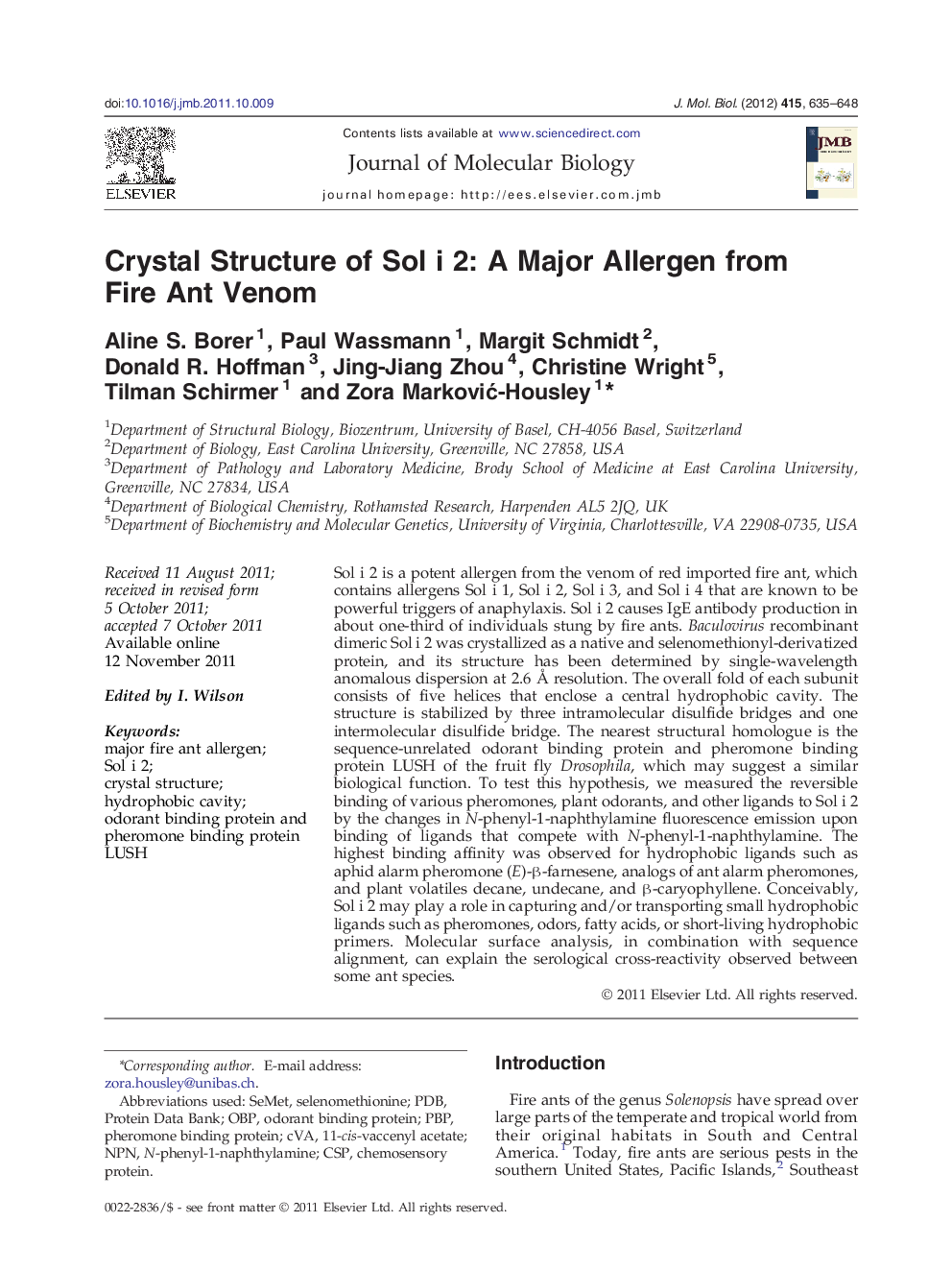| Article ID | Journal | Published Year | Pages | File Type |
|---|---|---|---|---|
| 2184842 | Journal of Molecular Biology | 2012 | 14 Pages |
Sol i 2 is a potent allergen from the venom of red imported fire ant, which contains allergens Sol i 1, Sol i 2, Sol i 3, and Sol i 4 that are known to be powerful triggers of anaphylaxis. Sol i 2 causes IgE antibody production in about one-third of individuals stung by fire ants. Baculovirus recombinant dimeric Sol i 2 was crystallized as a native and selenomethionyl-derivatized protein, and its structure has been determined by single-wavelength anomalous dispersion at 2.6 Å resolution. The overall fold of each subunit consists of five helices that enclose a central hydrophobic cavity. The structure is stabilized by three intramolecular disulfide bridges and one intermolecular disulfide bridge. The nearest structural homologue is the sequence-unrelated odorant binding protein and pheromone binding protein LUSH of the fruit fly Drosophila, which may suggest a similar biological function. To test this hypothesis, we measured the reversible binding of various pheromones, plant odorants, and other ligands to Sol i 2 by the changes in N-phenyl-1-naphthylamine fluorescence emission upon binding of ligands that compete with N-phenyl-1-naphthylamine. The highest binding affinity was observed for hydrophobic ligands such as aphid alarm pheromone (E)-β-farnesene, analogs of ant alarm pheromones, and plant volatiles decane, undecane, and β-caryophyllene. Conceivably, Sol i 2 may play a role in capturing and/or transporting small hydrophobic ligands such as pheromones, odors, fatty acids, or short-living hydrophobic primers. Molecular surface analysis, in combination with sequence alignment, can explain the serological cross-reactivity observed between some ant species.
Graphical AbstractFigure optionsDownload full-size imageDownload high-quality image (155 K)Download as PowerPoint slideHighlights► Fire ant venom contains a potent allergy-inducing agent Sol i 2. ► The 3D dimensional structure of Sol i 2 is similar to pheromone-binding protein LUSH. ► Both proteins contain hydrophobic cavity suitable for binding hydrophobic ligands. ► The role of Sol i 2 hydrophobic cavity is to sequester water insoluble ligands. ► Data analysis may explain the serological cross-reactivity between some ant species.
